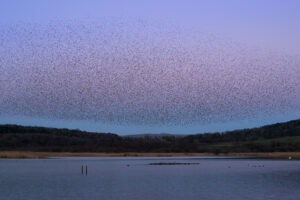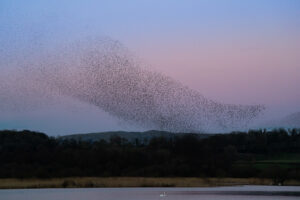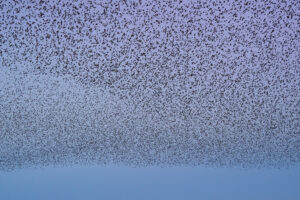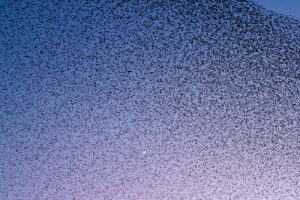The sun sets over the rim of coastal hills near Silverdale in Lancashire and the cloudless sky of an early spring evening glazes over with a cold, bright cerulean blue. A sliver of a waxing moon appears, edged into the firmament, circled like a stage-light as yet unlit. Quiet descends, made more so by the burring call of a bittern in the reeds. The audience is hushed. A few shadows emerge on dusk’s stage, a few cries of revellers escape, slowly assembling, excitement palpable in unseen vibrations. Finally, the curtain rises.

To the sound of an orchestra played in frequencies unheard by human ear, the starlings brush about under the hand of a painter in the elysium of their art. Pirouetting and spiralling from east to west in tens of thousands, the performers listen to the drumbeats of the universe.

Up, down, below, perfectly synchronised as if the whole flock thought and felt as one, bound by magnets and each other’s wing-stroke, in a choreographed show whose composer is the very planet over which they dance.
As one gigantic fan flicked open, the flock disperses into a sea of peppercorns, flooding the skies over the water’s mirror, swarming to their chorus of chattering calls.

And as the sky turns of an Egyptian shade the moon’s white gold is glimpsed beyond the dancers’ troops, aglow for the final crescendo before the fan is shut by the same will that had first released the birds and now commands them to their roost.


